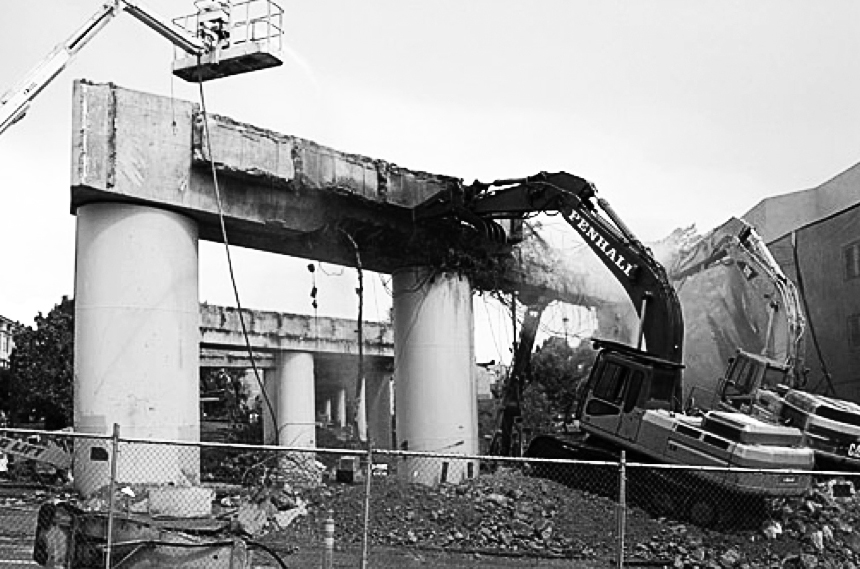
Feb. 18, 2014
Origin Story, Part 1: Loma Prieta Makes Way for Change
As part of AIA SF’s 2011 Architecture and the City festival titled Architecture of Consequence, envelope a+d [link to About section that mentions envelope on proxysf.local] published the zine ON SITE IN THE CITY. Made in part to supplement the exhibition, the zine supported the firm’s dialogue with Dutch Firm ZUS about how progressive design and creative problem solving can address many of our most pressing urban issues, from decreased social cohesion and unsustainable food systems to diminishing free time.
This excerpt originally appeared in ON SITE IN THE CITY as part of “PROXY: An Experiment in Flexible Urbanism” by Douglas Burnham.
PROXY, an experiment in flexible urbanism, came about through our studio’s response to a formal request for proposals from the San Francisco Mayor’s Office of Workforce and Economic Development in 2009. The city wanted projects with temporary uses—between one and four years—for any of the vacant Central Freeway lots in Hayes Valley until they could be sold for residential development.
These vacant lots came to exist through a series of events that started when the elevated, double-decker 101 Central Freeway was damaged in the 1989 Loma Prieta earthquake. After the earthquake, the fate of the elevated freeway was thrown into a contentious decade-long debate that was finally resolved through a local ballot measure. In 1999, a Hayes Valley neighborhood-sponsored measure won voter approval to remove the damaged elevated freeway and create a surface boulevard for distributing the 101 Freeway traffic into the city grid. The design of the boulevard, by planner Allan Jacobs, ended up creating a series of 22 irregular shaped vacant lots, the difference between the footprint of the former Central Freeway and the new Octavia Boulevard plan.
The San Francisco Mayor’s Office was given control of these vacant lots, labeled alphabetically from Lot A at the northern end to Lot V at the intersection of Octavia and Market Streets to the south, with the goal of bringing both market-rate and subsidized housing to the neighborhood and repairing the void left by the removal of the 32 Central Freeway. Due to the economic downturn of 2008, proposals for market-rate housing on these vacant lots (including our two-parcel multifamily residential development project on Lots M + N between Oak and Fell Streets) were put on hold by the private architect/ developer teams, and the Mayor’s Office initiated a request for proposals for temporary uses as an interim condition until the economy recovers.
Our immersion into the needs of the area and the open communication we developed with representatives of the Hayes Valley Neighborhood during the initial stages of developing our project at Lots M + N gave us a strong sense of what might be possible for programming temporary uses on other vacant lots in the area. These conversations also inspired us to think about how temporary structures might be used to bring new vitality and connectedness to the neighborhood. With this as our starting point, we began to develop an intentional strategy rooted in notions of flexibility and impermanence that could serve as a model for an adaptive mechanism of change within the urban condition.
